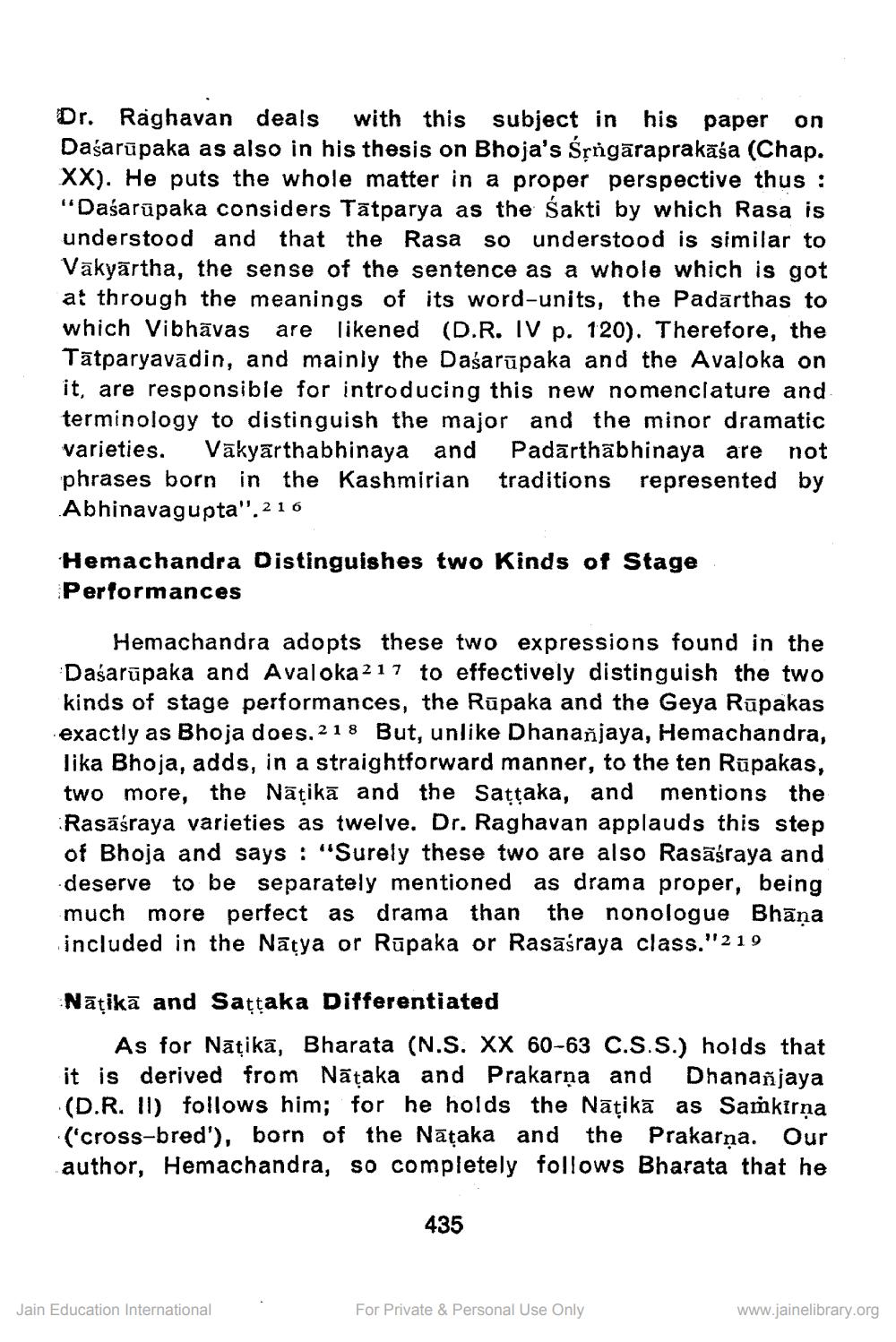________________
on
Dr. Raghavan deals with this subject in his paper Daśarūpaka as also in his thesis on Bhoja's Śṛngāraprakāśa (Chap. XX). He puts the whole matter in a proper perspective thus: "Daśarūpaka considers Tatparya as the Sakti by which Rasa is understood and that the Rasa so understood is similar to Vākyārtha, the sense of the sentence as a whole which is got at through the meanings of its word-units, the Padarthas to which Vibhāvas are likened (D.R. IV p. 120). Therefore, the Tātparyavādin, and mainly the Daśarupaka and the Avaloka on it, are responsible for introducing this new nomenclature and terminology to distinguish the major and the minor dramatic varieties. Vākyarthabhinaya and Padarthabhinaya are not phrases born in the Kashmirian traditions represented by
Abhinavagupta". 216
Hemachandra Distinguishes two Kinds of Stage
Performances
Hemachandra adopts these two expressions found in the Daśarūpaka and Avaloka 217 to effectively distinguish the two kinds of stage performances, the Rūpaka and the Geya Rūpakas exactly as Bhoja does. 218 But, unlike Dhanañjaya, Hemachandra, lika Bhoja, adds, in a straightforward manner, to the ten Rūpakas, two more, the Națika and the Saṭṭaka, and mentions the Rasāśraya varieties as twelve. Dr. Raghavan applauds this step of Bhoja and says: "Surely these two are also Rasāśraya and deserve to be separately mentioned as drama proper, being much more perfect as drama than the nonologue Bhāṇa included in the Natya or Rupaka or Rasaśraya class."219
Nāṭikā and Saṭṭaka Differentiated
As for Nātikā, Bharata (N.S. XX 60-63 C.S.S.) holds that it is derived from Nataka and Prakarṇa and Dhananjaya (D.R. II) follows him; for he holds the Nāṭikā as Saṁkirṇa ('cross-bred'), born of the Nataka and the Prakarṇa. Our author, Hemachandra, so completely follows Bharata that he
Jain Education International
435
For Private & Personal Use Only
www.jainelibrary.org




